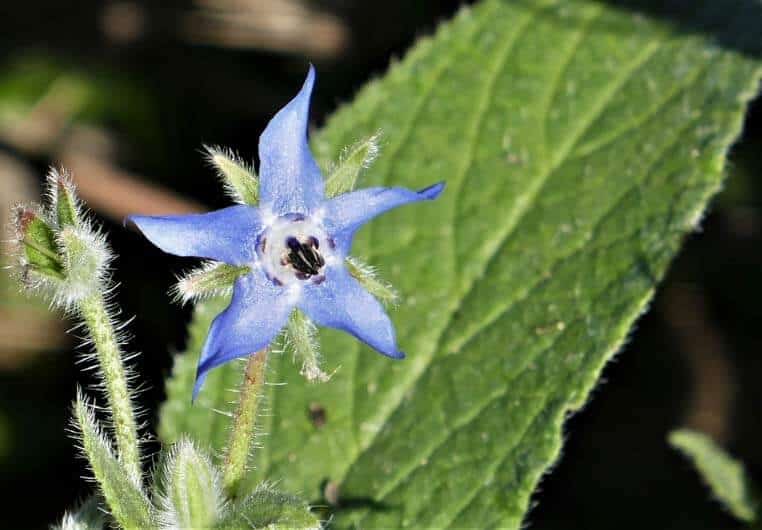Anti-Inflammatory Carrier Oils: 4 Effective Oils I Use and About their Fatty Acid Profiles
Are you looking for anti-inflammatory carrier oils to use on particular body areas that are inflamed with psoriasis, dermatitis, eczema, etc? Or maybe you’re looking for carrier oils you can add to your DIY skincare that can deal with those conditions? Maybe you are simply looking for general info on anti-inflammatory oils that can help tame inflammation of the skin?
I’ve written an entry on four of the carrier oils I use to treat eczema, psoriasis, dermatitis, etc and explain each in detail below.
I’ve been studying carrier oils for a while now and I must say there is a lot more to then meets the eye when it comes to oils in general. Just learning about the fatty acid profiles (check this article, this article, this article and this article), what each means, and how this information can help you determine which oils are good for which skin condition is a whole thing on its own right.
Besides the fatty acids there’s the unsaponifiables. And, then, learning how to make your own natural skincare (so many websites give you the wrong information!) using these oils and how to deal with each individual oil, i.e. taking into consideration their iodine value (some you can heat, others you can slightly heat and others you just can’t heat at all), etc, etc, etc.
So, there, a lot to cover and learn. I thought I’d like to keep this entry simple and show you what I’ve learnt regarding the best anti-inflammatory oils that I keep at hand and how to use them as isolated oils or as part of your DIY skincare.
What do You Want to Use the Anti-Inflammatory Oils for?
There’s a plethora of uses when it comes to anti-inflammatory oils. For example:
- For the body: muscles aches, joint pains, etc
- For the skin: acne, dermatitis, eczema, psoriasis, etc
Here we’ll deal with anti-inflammatory oils for the skin. You can also check out my herbs for knee/joint pain article which doesn’t deal with carrier oils but can give you some more ground on muscle pain around the knee area and which herbs can help. Always good to know.
Anti-Inflammatory Carrier Oils and Their Fatty Acid Profile
When it comes to fatty acids each plays a different role within that oil, and different fatty acids are beneficial for different things when it comes to our skin.
You must understand that it is the fatty acid composition that makes an oil more or less appropriate for a skin condition. When it comes to inflammation, we also have to take into account plants that help with the condition itself (we can also extract components that help calm inflammation via herbal infusion or oil maceration, which are the most common methods [there’s also great anti-inflammatory essential oils like German (Blue) chamomile]). Calendula and St. John’s Wort are two good examples of plants that we can macerate in oil in order to extract their anti-inflammatory components (we can macerate in olive oil, for example) so we end up with a macerated oil that can also help with these types of conditions. But I’ll stick to plant carrier oils that don’t need to be macerated as I think that would deserve a different entry.
Understanding Why Some Oils Are Anti-Inflammatory: Linoleic Acid (LA) and Gamma-Linolenic Acid (GLA)
I’m not going to go into detail in terms of the fatty acids as it might be a little too much information for this entry and, to be honest, I’m still learning about the chemistry myself. All you’d need to know is that out of all the fatty acids that make up an oil, the unsaturated fatty acids: Alpha-Linolenic Acid (LNA) and Gamma-Linolenic Acid (GLA) [both essential fatty acids – EFAs] are particularly indicated to help control inflammatory conditions to the skin and body.
Here’s a little on each:
Linoleic Acid: Omega-6 Linoleic acid (an 18 carbon chain with two double bonds) can help with inflammation. “In the human body, linoleic acid is converted into various compounds that alleviate inflammation” Source.
Gamma-Linolenic Acid: Omega-6. This is a fatty acid responsible for reducing inflammation, it also supports our immune system and helps maintain healthy hair, nails and skin. Helps with hormonal balance. It is the fatty acid that helps overcome eczema and psoriasis, according to studies. Very effective at soothing skin conditions.
Four Anti-Inflammatory Carrier Oils I Use
1. Borage (Borago Officinalis) Oil – Not to be used on broken or sensitive skin

Let’s look at the fatty acid profile:
Gamma-linolenic acid (26%-38%)
Linoleic acid (35%-38%)
Oleic acid (16%-20%)
Palmitic acid (10%-11%)
Stearic acid (3.5%-4.5%)
Eicosenoic acid (3.5%-5.5%)
Arachidic acid (3%-4%)
Erucic acid (1.5%-3.5%)
Properties: Borage (a lovely, beautiful plant with bright blue star-shaped flowers as you can see on the photo above) has the highest recognised GLA (gamma-linolenic acid) content of any other oil. As mentioned before, gamma-linolenic acid is a great anti-inflammatory and helpful at combating inflamed skin conditions such as itching, redness, irritation. GLA is known as an anti-inflammatory. Borage oil has high amounts of linoleic acid, which together with the gamma-linolenic acid makes this an oil that gets absorbed quite quickly. This oil is very penetrating making it a great carrier of the fatty acids and unsaponifiables that can go deeply into the tissues. This oil can go rancid very quickly so beware of shelf life (6 to 8 months).
Helps With: Psoriasis, eczema, topical dermatitis, reduces inflammation and dryness. Reduces itching.
How to Use:
On FACE: After cleansing, massage a few drops into damp face and neck OR add a few drops to your regular day or night moisturizer. Use only on unbroken skin.
On BODY: Use it as a moisturizer on your body, cuticles, hands and feet OR add a few drops to your body lotion. Use only on unbroken skin.
If Making Skincare: For dry, sensitive or inflamed skin. Use as 10 to 30% of the carrier oil.
*Caution*: Because this oil is highly penetrating (it will in fact penetrate damaged skin at a higher rate than normal skin) this can cause irritation. Do not use on injured skin.
Helpful article here.
Borage Seed Oil for Inflamed Skin
GET MY RECOMMENDED BORAGE SEED OIL HERE.
2. Evening Primrose (Oenothera Biennis) Oil – Ideal for sensitive skin

Fatty acid profile:
Linoleic Acid (65%–75%)
Gamma-Linolenic Acid ( 9%–11% – C18:3)
Oleic Acid (5%–11%)
Palmitic Acid (5%–8%)
Stearic Acid (1%–3%)
Arachidic Acid (2% max C20:0)
Eicosenoic Acid (2% max C20:1)
Alpha-Linolenic Acid (0.5%)
A light yellow oil with a faint marine odour. The oil is extracted by pressing the seeds of the plant. It has a short shelf life of around 6 to 8 months. This oil can calm inflamed skin and in general it can help with dryness, itching, redness, and scaling. An excellent oil if wanting to care for wounds, it has powerful repairing activity on the skin and it can help ease symptoms of eczema and psoriasis. Evening Primrose oil has polyphenol gallic acid which helps speed up the healing of wounds and burns. Tannins in the oil help by providing astringent properties and catchins aid by providing antibacterial elements to the oil. Evening Primrose oil improves the health of our skin layers.
Properties: Evening Primrose oil is rich in polyunsaturated fatty acids, in particular linoleic acid (around 70%) and gamma-linolenic acid (10%). In fact, more than 90% of its fatty acids are composed of polyunsaturated acids. Actions: moisturizing, anti-inflammatory, regenerative, healing and regulates sebum. Minerals: Potassium, copper, iron, phosphorus, magnesium, manganese, zinc and calcium. Amino acids: glycine, lysine, phenylalanine, arginine, leucine, histidine, proline.
Helps With
Psoriasis: decreases symptoms due to its anti-inflammatory effect
Eczemas: it is effective in reducing the itching and hydration of the skin.
Acne: reduces the inflammation of the organs and prevents the accumulation of fat.
Dryness: evening primrose oil retains moisture by providing hydration to the skin.
Also: Evening Primrose oil is a great anti-ageing oil and has healing properties that are noteworthy.
How to Use:
On FACE: After cleansing, massage a few drops into damp face and neck OR add a few drops to your regular day or night moisturizer.
On BODY: Use it as a moisturizer on your body OR add a few drops to your body lotion.
If Making Skincare: For all skin types, particularly good for inflamed, ageing or sensitive skin. Use as 10 to 30% of the carrier oil.
**Note** If treating sensitive skin choose Evening Primrose oil over Borage oil.
Evening Primrose Oil for Inflamed Skin
GET MY RECOMMENDED EVENING PRIMROSE OIL HERE.
3. Hemp (Cannabis Sativa) Oil – A great oil if your skin is oily

Fatty acid profile:
Linoleic Acid (53–60%)
Alpha-Linolenic Acid (15–25%)
Oleic Acid (8.5–16%)
Palmitic Acid (6–9%)
Stearic Acid (2–3.5%)
Gamma-Linolenic Acid (1–4% C18:3)
Arachidic Acid (1–3% C20:0)
Stearidonic Acid (0.4–2% C18:4)
Eicosanoic Acid (<.5% C20:1)
Behenic Acid (<.3% C22:0)
A fairly unique oil due to its fatty acid composition, it is important to know that the hemp plant is NOT the marijuana plant, although it is often confused with it. This oil is high in chlorophyll content which gives the oil a dark, green color. The scent is sweet and herbaceous. It has a complex and unusual range of fatty acid, a unique fatty acid composition with excellent emollient properties. It has a broad range of fatty acids and this is why it’s known as: “nature’s most perfectly balanced oil”. It helps keep moisture in the skin. Another oil with a short shelf life of 6 to 8 months.
Properties: Hemp seed oil is rich in linoleic acid and also has some gamma-linolenic acid in it. It is a good oil for mature skin because it can help reduce fine lines and general signs of ageing. It also has antioxidants.
Helps with: As we already know, GLA is anti-inflammatory and can also support the immune system while the stearidonic acid (SDA) is effective against atopic dermatitis and difficult skin conditions. It can sooth and heal minor burns and dry skin. It can repleanish moisture and also protect against cellular damage.
How to Use:
On FACE: After cleansing, massage a few drops into damp face and neck OR add a few drops to your regular day or night moisturizer.
On BODY: Use it as a moisturizer on your body OR add a few drops to your body lotion.
If Making Skincare: Hemp seed oil is an excellent oil for dry skin, eczema and psoriasis. Also good for sensitive or ageing skin. Use at 10% of carrier oils. Good oils to blend with: apricot kernel oil or grapeseed oil.
Hemp Seed Oil for Inflammation
GET MY RECOMMENDED HEMP OIL HERE.
4. Black Seed (Nigella Sativa) Oil

Fatty acid profile:
Linoleic Acid (58%)
Oleic Acid (24%)
Palmitic Acid (14%)
Stearic Acid (2.6%)
Arachidic Acid (1.3% C20:0)
Myristic Acid (0.5% C14:0)
Alpha-Linolenic Acid (<1%)
I’ve always been confused with the name of this oil believing it was related to pepper, cumin, coriander or caraway but it doesn’t really have anything to do with any of those. I suppose I confused ‘black seed’ with ‘black pepper’ somehow, as I couldn’t really ‘place’ this oil anywhere within the list of oils in my mind. This oil is also known as black oil, kalonji oil and kalajira oil amongst other names. I’m not sure where it comes from (is ‘black seed’ a plant?) so I’ll have to do some research around this.
Properties: These tiny seeds are packed with innumerable amounts of nutrients. As you can see on the fatty acid profile above, this oil has a high percentage of linoleic acid (58%) which makes it a great oil in terms of absorption. It also has iron, copper, zinc, calcium, folacin, phosophorus, thiamin, pyridoxine, thiamin, riboflavin, proteins, carotenes, fibre, carbohydrates.
Helps with: Black oil can treat a number of skin conditions which include psoriasis, eczema, wounds, acne, blemishes, etc and even muscular and tissue pain.
How to Use:
On FACE: After cleansing, massage a few drops into damp face and neck OR add a few drops to your regular day or night moisturizer.
On BODY: Use it as a moisturizer on your body OR add a few drops to your body lotion.
If Making Skincare: I don’t have information on amount of oil that can be used as a carrier (please leave it in the comments if you know), but if you don’t have this particular oil you can substitute with hemp or tamanu.
Black Seed (Nigella sativa) Oil for Inflammation
GET MY RECOMMENDED BLACK SEED OIL HERE.
About Black Seed Oil & Hemp Oil
According to Susan M. Parker, black seed oil and hemp oil for eczema are great as these oils aren’t particularly high in oleic acid. Skin with eczema and psoriasis have problems processing oleic acid for some reason and studies have found that palmitic acid (a 16 carbon saturated fatty acid) and polyunsaturated linoleic acid were both more helpful for skin with problems with eczema than higih oleic acid oils. She wouldn’t recommend olive oil, almond oil or avocado oil, for example, as these are high in oleic acid. Coffe bean oil is also a good one to use.
Other Interesting Anti-Inflammatory Oils
The above lists my favourite anti-inflammatory oils, but there are others worth mentioning. Tamanu, Perilla (check it here), Jojoba (anti-inflammatory: good for skin infections, eczema, psoriasis, dermatitis), Passion Fruit, Shea Butter, Camelina (check it here), Carrot oil (great for itching, dryness, burns, eczema and psoriasis), flaxseed oil (useful for acne, psoriasis, eczema), Rosehip oil (high in GLA), Sesame (dryness: psoriasis, eczema), wheat germ (used for dry cracked skin, eczema, psoriasis). Any others? Leave the info in the comment section.
Other Resources
https://skinchakra.eu/blog/archives/392-10-Best-Anti-inflammatory-Oils.html
Keywords: anti-inflammatory oils, anti-inflammatory carrier oils, best anti-inflammatory oils, carrier oils for inflammation,
